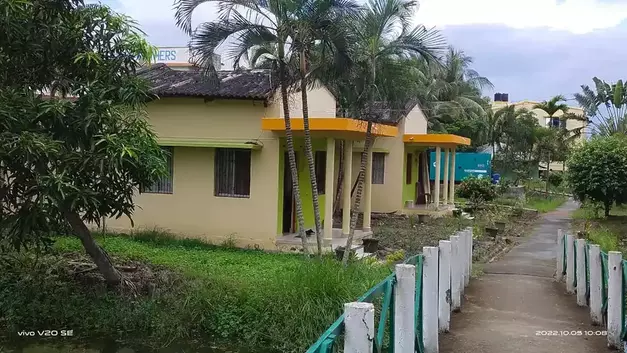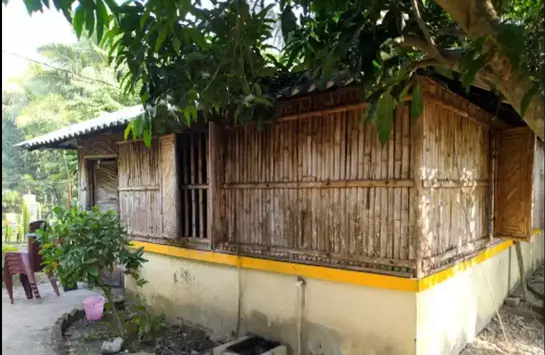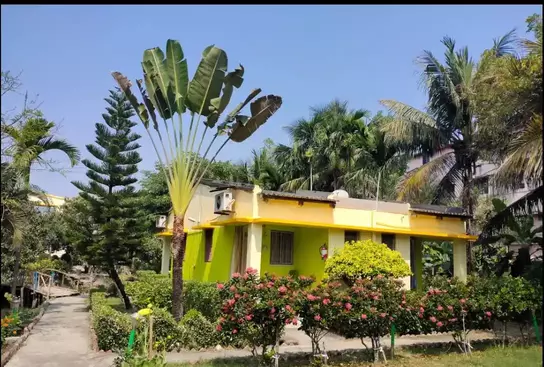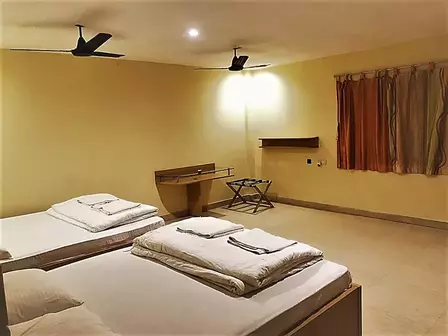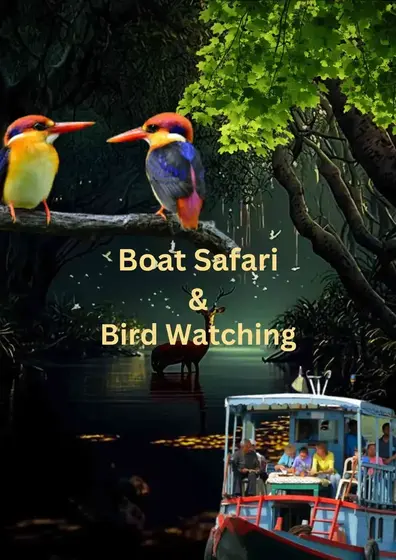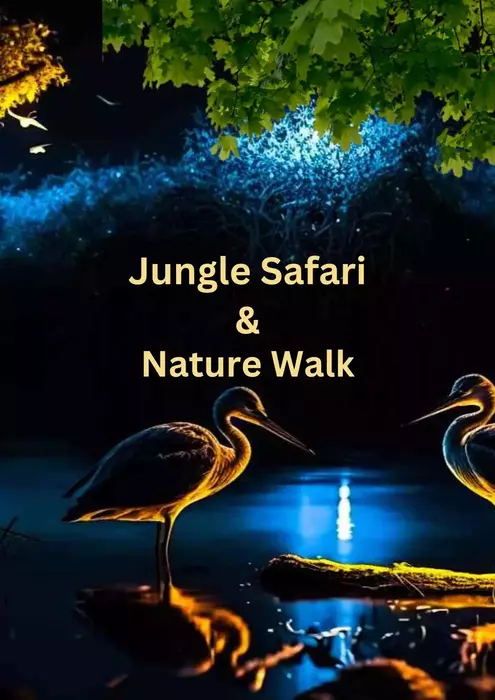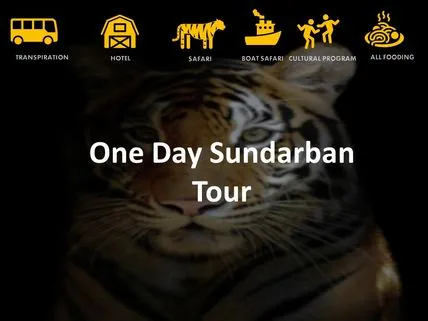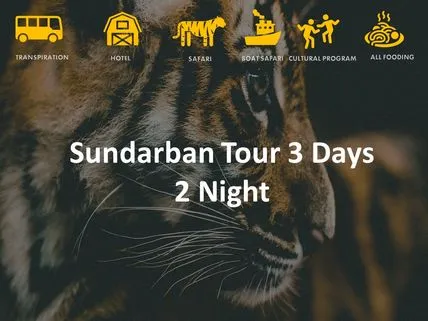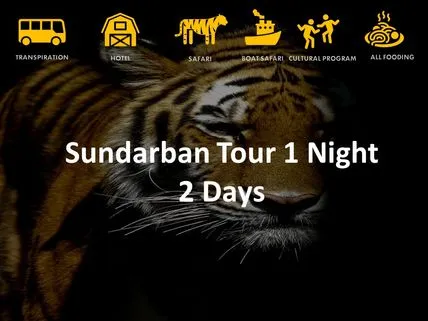SUNDARBAN TRIP From Rs. 2799/-
Budget Family Sundarban Tour
Best Family Sundarban Tourism
WB Govt Officially Registered
Best Budget Family Sundarban Tour. The Royal Sundarban Family Tour Package Consists Of Round-Trip Transportation By Vehicle From Kolkata To Gothkhali, Lodging At Our Resort (Both AC and non-AC Rooms Are Available), All Meals, And The Entire Tour. We operate sundarban tour from Kolkata.
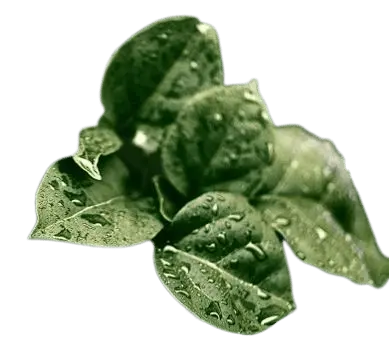
SUNDARBAN TOUR STARTING FROM RS 2799/-
As summer comes to an end, everyone is looking forward to a few weeks of relaxing and taking it easy. You can have a great time on vacation in India at any of the many places there. On the other hand, we have a great new place for you to check out this time. The Sundarbans are in West Bengal. You have probably heard of them.
Compared to other possible vacation spots in India, this place doesn’t get as much attention as it should. But if you go to the Sundarbans and use Sundarban Tour Booking to plan your trip, you will feel something you have never felt before.
WHAT IT OFFERS IS RESOLUTIONS TO BOTH THE MIND AND THE EYE
We all know that one of the biggest problems the world is facing right now is that its natural woods are being cut down. Once, people thought that the Amazon was where most of the world’s air came from. But now, there is almost no oxygen in the Amazon.
The highest officials want to get back what has already been lost or stop more of what has already been lost from being destroyed. In comparison to the world as it is now, we are going to show you a new world that is full of natural beauty and has many different kinds of plants and animals.
We will make plans for you to go to the Sundarbans on your time off.
Let’s begin:
To make sure you are ready for your trip to the Sundarbans, fill your bags with mostly summer and jungle safari clothes. You should bring some cold clothes with you, like a blanket or a sweater and some track pants. Bring some strong shoes and boots like running shoes. Also, bring some bug repellent plants and any medicines you might need.
You are about to go on a journey through the jungle.
The Daring Proposal: Imagine for a moment that you and your loved ones are exploring the Sundarbans in search of new species and learning about the area’s rich natural past. It will definitely be a fun trip with a lot to learn and be amazed by.
Surprising yourself!
The Trip: If you want to see the Sundarbans, you have to start in Kolkata. The most fun and useful way to get to the Sundarbans is on a tour that starts in Kolkata and ends in the Sundarbans. So, you should book a flight to Kolkata, which is known as the “city of joy,” and start your trip there.
Your family is going to have a great time on the trip.
Make sure your trip to the Sundarbans is safe. Our number one goal is to make sure that your trip to the Sundarbans is safe. So, we highly suggest that you get in touch with Sundarban Tours and Travels as soon as possible, even before you leave on your trip.
We will show you how to get to Sundarban in an organised way. We will also help you find a good hotel room and make sure you have a great vacation. Your trip to the Sundarbans during your holiday is over. I hope you had a good time and will remember it forever.
Show more +THE MOST PREMIUM FAMILY SUNDARBAN TOURISM PACKAGE
4 Clicks To Get All Sundarban Tour Package Details
Are You Looking For Budget all Included Sundarban Tour?
Please Select Us know What Package You Are Looking for
Contact Details

Places to Visit In Sundarban Tour
We have chosen the most beautiful places in Sundarban because we are the best tour operator in Sundarban.
The Sundarban covers a very large area, and you can’t get to all of it by car. After a lot of study by knowledgeable tour guides and people who run tours in the Sundarban, it was found that three different places in the Sundarban are the best and most beautiful. Check out the following places:
Sajnekhali Watch Tower:
The Sajnekhali Watch Tower is one of the most well-known watchtowers in the park. It is attractive because it is close to several places in the Sunderban area. This is also where the Forest Department’s main building is. This is the only place where tourists can ask for permission to enter the national park. Twenty people can stay at the Watch Tower at the same time.
The Bono Bini Temple, the Mangrove Interpretation Center, and the tourism lodge of the Bengal Tourism Department are the main things to see and do in this area. With this lookout tower, going into the woods is fun and easy. Some kinds of avifauna, like the Pelican, Kingfisher, Plover, Lap Wing, White Bellied Sea Eagle, Whimprel, Curfew, and Sandpipers, put on a great show, especially for bird lovers.
Watchtower at Sudhanyakhali:
The best place for a nature lover to see a tiger is from the Sudhanyakhali watch Tower. There is room for 25 people in the Watch Tower. Behind the watch tower is a pond with nice water. Wild animals used to drink water at this spot. Beyond the pond is a large area of farmland that gives a nice view of the forest. In addition to tigers, you might also see axe deer, wild boars, and alligators.
Do Ban Ki Watchtower:
This lookout has a canopy path so that people can see the interesting plants and animals. This canopy walk is almost 500 metres long and 20 feet high. It is above sea level. Tourists may also see Chital Deer and Bahmini Kites, in addition to tigers.
Netidhopani Watch Tower.
There is a link between this lookout and the story of Lakhindari and Behula, which is well-known. The story goes that King Pratap Aditya built a road on the right side of the bush to protect the coast. A nearby sweet water lake is also part of the Tower, which can hold up to 20 people at once.
Crocodile Project in Bhagatpur:
These are the waters where the biggest estuary crocodiles live. Because of its well-known hatchery and haven, it is a popular place for tourists to visit in the Sunderban.
Piyali:
Along the road that leads to Sunderban National Park, there may be a small village or town. It’s a really beautiful place that leads to Sunderban.
Isle of Halliday:
The southern edge of the Sunderban Tiger Reserve is where these islands can be found. The area is also home to the Halliday Nature Sanctuary. The Sanctuary has the honour of being the last place where the endangered barking deer can stay safe. The Lothian Island Wildlife Sanctuary is a paradise for people who love to watch unusual birds.
Kanak:
Kanak is one of the best places for Olive Ridley Turtles to rest because it has sandy beaches and water that is very clear. There are a lot of myths about the Kanak Turtles. They are meant to stand up from the mouth of the sea to the Sunderban National Park, which is about 100 kilometres away.
Show more +We Have 500+ Positive Customer Reviews.

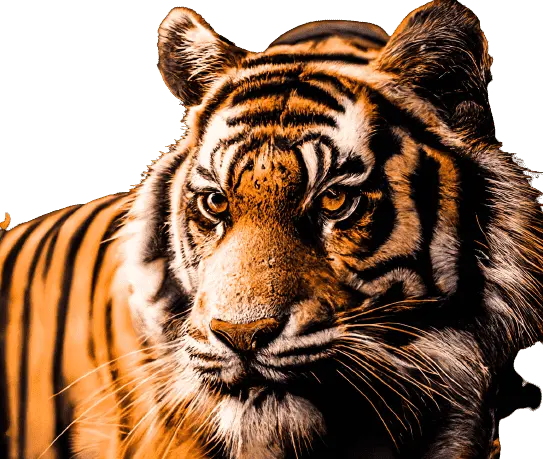
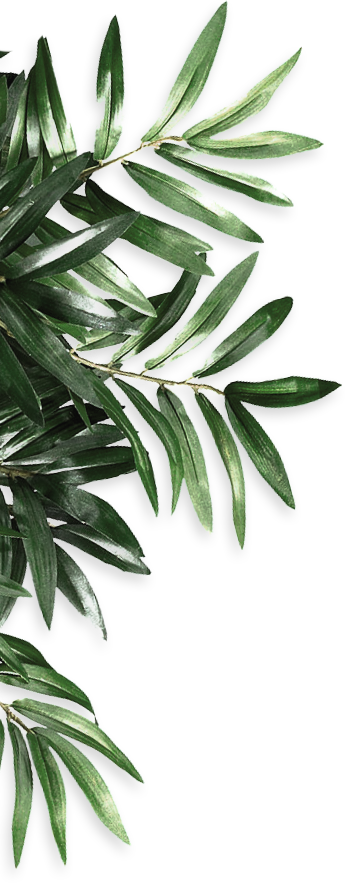
All Include Family Sundarban Tour Package
“Royal Sundarban Tourism” is the best way to see Sundarban’s powerful mangrove forest in West Bengal. About 30,000 plant species and almost 2 million animal species live in the Sundarban Mangrove Forest. They live in saltwater areas and canopy towers, among other places. The Sundarban Tour Package (wbtdc) is something we offer to our clients.
Check out the best luxury packages that the Sundarbans has to offer. These will give you the most for the money you are ready to spend. So, let’s go on a “tour de Sundarban” at the best possible price for a Sundarban tour plan.
Our Sundarban Hotel
Best Sundarban Hotel Accommodations
Find the BEST deals on hotels in Sundarban, India. “Best Price Guarantee” and “Open 24 Hours a Day” are the best picks. Listed in order of lowest price… Sundarban, After reading through thousands of customer reviews, book a room at a hotel in Sunderbans. Get the best green tour of the Sundarbans.
Our Sundarban Tour video

Our Food Menu
This Is a combination of all 3 days food menu.
Sundarban Tourism Adventurous list
Boating Safari
A boat tour is one of the best things to do in Sundarban. This boat tour is something that everyone who visits Sundarban must do. If you don’t take this, Sundarban won’t be nearly as fun as it could be. It would be a shame to miss out on everything this boat tour has to offer. It’s a great way to relax, see the Sundarban for yourself, and get some beautiful photos to take home. Also a trip from Kolkata to the Sundarbans.
Wildlife Observation
Watching birds is a beautiful and interesting thing to do. We don’t usually have such a great chance to get to know the birds and talk to them. Let’s get started now while everyone is on the same page. It only happens once, and you won’t be sorry you did it. You’ll have a great time here because there are many kinds of birds to see. The best day trip to the Sundarbans.
Recreational Hike in the Wild
Walking through wild places has a calming effect on both the mind and the body. In cities, this chance might not come up all the time. This is something that happens only once in a lifetime. You can feel the good feelings that come from being outside. It’s not hard to get into the spirit of things and enjoy the beautiful walk through the woods. Positive feelings and peace rule.
Dancing of the People
It’s amazing to be in a place where the dance is unique. If you go to that country, it would be silly not to try out the local dance. Sundarban is a must-see just to see how people dance there. While you’re with them, you’ll get to know the area as it really is and have a good time. This is the kind of thing you remember. Enjoy the shows as much as you can.
Drama Series Banabibi
The gods of the forest are the Banbibi. So, she has the most important part. Before going into the forest, they pray to Banabibi. They trust that no matter what might happen to them in the woods, she will keep them safe. So, the dramatisation of her life is also very interesting. You can use a camera to record what’s going on and then show your friends and family.
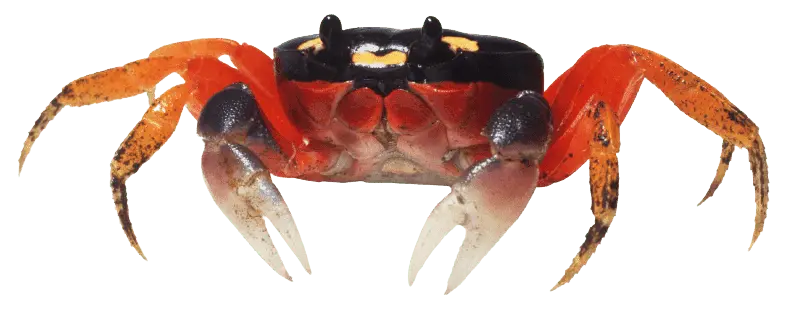

sundarban tour package price
Tours with or without air conditioning, deluxe cottages with air conditioning, delicious meals, informed tour guides, and private cars. 12 Regular Places, Folk Dancing, Cleaning of Vehicles and Boats, Cleaning of Rooms, Packages with and without AC, We are the best-known and most experienced sundarban tour business in Kolkata.

Sundarban Tour Facilities
সব সুবিধা একসাথে
“Royal Sundarban Tourism” is the best way to see the powerful mangrove forest in Sundarban. Over 30,000 species of plants and about 2 million species of animals live in the Sundarban Mangrove Forest, its saltwater habitats, and its Canopy Tower. Check out the best luxury packages for the Sundarbans that will give you the most for your money. So let’s go on a “tour de Sundarban” with the best rate for a Sundarban tour package.
Verify if your trip package includes a stay at a five-star hotel.
Most tour packages to the Sundarban are run from Kolkata. Before you book a trip from Kolkata to Sundarban, make sure you know how long it will take to get there. You’ll need to figure out both the route and how far you’re willing to go.
Whether you fly in from another state or drive in from West Bengal, your travel package must include a place to stay in the Sundarbans. A high-end resort with all the amenities of a big city would be the best choice. Before you buy a Sundarban package, it’s a good idea to find out what hotel you’ll be staying at.
Examine the schedules
Let’s say you’ve agreed to go on a trip for three days and two nights. Here is a list of possible vacation routes that you could use to plan your trip. Check to see if your trip will take you to any of the area’s well-known landmarks.
You will also be able to go to places where animals and plants are protected, like tiger, crocodile, turtle, and bird reserves. Here, you should ask your tour guide if they plan to show you all of the best parts of the Mangrove Forest.
Check the schedule for the Sundarbans cruise.
Verify the availability of healthy snacks
You can’t have fun on an adventurous trip if you don’t eat good food at every meal. So, if you’re thinking about booking a trip with a Sundarban package deal, you should ask your travel agent ahead of time if he can guarantee that you and your family will have access to healthy meals during your trip.
Because a stomachache can get you into trouble in the woods, it’s best to eat freshly cooked food made with fresh ingredients from the kitchen.
Be sure to have a look at the conveniences.
Even though they are on a safari to see strange animals, people from the city still have to do the same things every day. Find out from your travel agent if there will be things like free Wi-Fi, a hot breakfast, a call to wake you up, a clean, comfortable room, a pool with soft water, mineral water to drink, etc.
Most resorts in this part of Sundarban give their guests water from the area to drink, bathe in, and use for other non-industrial purposes. The Sundarban Tiger Roar Resort is one of the few five-star hotels in the world that gives guests free, unrestricted soft water to use in the hotel’s water purification system.
Obtaining a local guide is possible.
On a trip to the Sundarbans, you need the help and knowledge of a local guide. When planning a trip to the Sundarbans, be sure to ask your travel agent if they work with a local tour company.
If you know more about the area, you’ll be able to see more of its true colour and vibrancy. A well-planned trip to the Sundarbans isn’t just about seeing the protected forest from atop one of the many watchtowers. It also means learning about the religions, myths, gods, folk songs, arts, and crafts of the area.
Visit the Sundarbans
Let’s say you want to go from Kolkata to Sundarban to get a closer look at the forest. In this case, you can’t miss the chance to learn about the Mangrove Forest from people who live there and know it well by not exploring the area around it.
One of the best parts of some of the most interesting Sundarban Tours is going to a village. In this section, you can read about fishermen who have seen the tiger or other strange animals in the woods. You’ll get a better idea of the problems and threats that some communities have to deal with every day just to stay alive.
Spend money on keepsakes
One of the best parts of a trip to the Sundarbans is the chance to buy some unique things to remember the trip by. You can buy honey here, and you can also buy organic brown rice.
Real goods from the area can be bought for a steal. Your guide should be able to help you find a useful facility if you need help.
See what other tours cost before you commit.
It’s no secret that ecotourists and animal lovers from all over the world flock to the Sundarbans. There are a lot of Sundarban vacation packages for some obvious reasons. Before you book a vacation, make sure you do some research on the prices and amenities of different packages.
Finally, to sum up:
Never put price over effectiveness. When comparing Sundarban Tour packages, don’t forget to look at all of the things below to judge the quality and safety of the tour before booking and going on it.
Show more +THE MOST BUDGET-FRIENDLY SUNDARNBAN TOUR EXPERIENCES.
All the facilities are invluded

জঙ্গলে কার্পণ্য করলে কিন্তু বিপদ
Buy Sundarban Tour Online
Air conditioning or no air conditioning, deluxe cottage with air conditioning, delicious menu, knowledgeable tour guide, and private transportation. Includes 12 regular shows, folk dancing, a car, a boat, room cleaning, air conditioning, and no air conditioning. Sundarban Tours & Travels is proud to be the best company in its field.
TO RESERVE YOUR SUNDARBAN TOUR PACKAGE, CONTACT ROYAL SUNDARBAN TOURSIM TODAY.
Do you enjoy visiting different places? We try to get away from the stresses of everyday life and the office to find comfort and relief. If you want an exciting and adventurous vacation, you can book a Sundarban tour package by calling Explore Sundarban.
“Sundarban” is the name of a beautiful forest full of sundari trees. This type of forest is often called a “mangrove forest.” When the Ganges, the Brahmaputra, and the Hooghly rivers meet, they form a delta called the Sundarban. Because of the tides, it is the largest delta in the world. So, it sounds like a lot of fun to go there.
Thanks to our esteemed visitors, we have earned a 4.9 rating as a travel provider.
Only people who really care about nature should come with us into the Sundarban forest, which is a natural wonder in its raw state. Our wbtdc Sundarban tour packages are designed to give you a taste of the untamed side of nature.
Travel packages to the Sundarbans are the best deal, so mark your calendars now. There are Sundarban tour packages that last either 1 night and 2 days or 2 nights and 3 days.
This article will discuss the benefits of taking a Sundarban Tour.
On our trip to the Sundarban forest, we should only bring people who really care about the beauty of nature. Our wbtdc Sundarban tour packages are made to show you how wild nature can be.
The Sundarbans are home to many different kinds of birds, reptiles, and animals, including the endangered royal Bengal tiger and many other species of birds, animals, and reptiles.
Does your daily schedule make you sad? Try a different way to do it. Sundarban is a dream place to go for people who love nature, take photos, like to sightsee, want to see beautiful sunrises and sunsets, like to cruise, and want to go on wildlife safaris. If you book one of our Sundarban tours, you’ll be able to relax in a natural setting with lots of open windows and exciting new experiences.
Explore Sundarban offers Sundarban Jungle Safaris, which take you to Sundarban National Park so you can relax and get back to nature. There are many places to visit. Some of them are Sajnekhali, the Sajnekhali Bird Sanctuary, Sudhanyakhali, and Burirdabri. Explore Sundarban’s sightseeing package is perfect, and it won’t break the bank.
The Sundarban is the largest mangrove forest in the world, and most Royal Bengal Tigers come from there. (close to 400 of them). It’s very hard to see a tiger in the Sundarban, but it’s the perfect place for an exciting vacation. Tigers of the Royal Bengal subspecies are just one of the many animals and birds that can be seen in Sundarban.
When compared to other travel firms in Kolkata, why are we your best option?
Explore Sundarban has trips that are sure to make you happy if you want to do something exciting. You can take a deep breath and calm down among the mangroves as you go deeper into the unknown. In the Sundarban Delta, you can see a beautiful sunset. No trip is complete until you’ve watched a peaceful sunset. A stunning sunset awaits you in Sundarban.
We definitely make sure that your trip will be exciting, joyful & worth of money.
We try to think of everything that could make you happy. So, why don’t you just do it? Book a tour package from Kolkata to the Sundarbans right now and feel close to nature. Sundarban Tour Packages from Royal Sundarban toursim are so much fun that you won’t be unhappy when you get home. You will definitely like it.
For a perfect vacation, you always need to plan well in advance, so you need to find the best travel agency in Kolkata to help you. Don’t stress about it. You can plan your trip with Royal Sundarban toursim. We offer Sundarban Tour Packages that won’t break the bank and will make you happy.
You can look at the prices of Sundarban tours at different travel agencies in Kolkata and compare them. You’ll see that we offer a better experience for a lower price.
We are a 4.8 rated travel Concern reviewed by our honorable guest.
Let’s take your first step into the perfect Sundarbans wildlife. One of the most popular tourist destinations in India, Sundarban tour is less than a day’s drive from Kolkata.
So, don’t wait. Plan a trip with your family and book your Sundarban Tour Packages From Kolkata with Royal Sundarban toursim now.
Show more +Sundarban Tour FAQ
Followed rules by Sundarban tour package wbtdc
Questions and Answers (FAQ) Of Sundarban Tour. Where do we begin our tour? · Do I need to carry identity proof? Need to bring a sleeping bag and blankets? Know every detail.
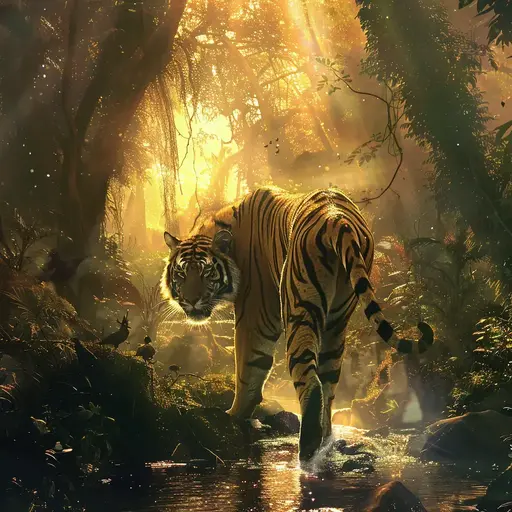
Things To Carry

Lets Book The Sundarban tour and Travels With Us
We “Royal Sundarban Tourism” Assuring You That You Will Get The Best Value For The Services You Are Paying For, We Provide the best sundarban tour experience.
One Of The Best sundarban tour operator in Kolkata
Mr Dilip Maity is one of The Best Sundarban Tour operators. You Can directly talk to him. To get all the details about the tour.
আর দেনি না করে কল টা করেই ফেলুন আমায়
“আমাকে কল করুন এবং আমি ব্যক্তিগতভাবে সমস্ত বিস্তারিত ব্যাখ্যা করব“




